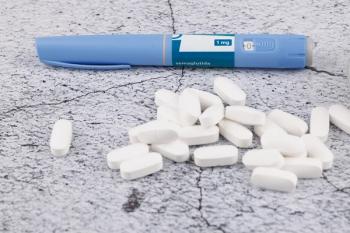
- Drug Topics May 2019
- Volume 163
- Issue 5
EPA’s New Rules on Drug Disposal Begin in August
Approved regulations allow for some flexibility for drugs that can be redistributed or qualify for manufacturer credit.
The U.S. Environmental Protection Agency passed new hazardous waste pharmaceutical disposal rules that ban sewering, but the approved regulations allow some flexibility for drugs that can be redistributed or that qualify for manufacturer credit.
The new rules, established in
Trending:
Pharmacies and healthcare facilities will not be classified as a large-quantity generators when they create more than 1 kilogram of acute hazardous waste pharmaceuticals in one month, and thus will not need to comply with satellite accumulation area regulations.
In a welcomed and unusual departure from ubiquitous paperwork, pharmacies will not need to specify hazardous waste codes on manifests, will not need to keep track of how much hazardous waste is generated each month, nor need to segregate acute and non-acute hazardous waste pharmaceuticals.
The definition of hazardous waste pharmaceuticals are established in
- investigational drugs;
- free samples of pharmaceuticals received by healthcare facilities;
- residues of pharmaceuticals remaining in empty containers;
- contaminated personal protective equipment;
- floor sweepings; and
- clean-up material from the spills of pharmaceuticals.
What Pharmacies Need to Do
With regulations in tow this summer, pharmacies will need to check state law and state regulatory activity to determine compliance deadlines before the federal deadline in August. Subpart P compliance deadlines will include a one-time notification. All personnel wil need to be trained on non-creditable hazardous waste pharmaceuticals, and a system will need to be created to determine whether drugs are creditable or non-creditable, and storage protocols will need to be established for each category and also distinguish between prescription and non-prescription products. Storage cannot exceed 365 days onsite, and healthcare facilities must adhere to labeling requirements, container standards, and shipping standards.
Latest:
EPA also passed new empty container standards for dispensing bottles, syringes, IV bags, and other acute and non-acute hazardous waste pharmaceuticals. One notable change is a ban on triple rinsing containers with acute hazardous waste.
Exemptions exist for DEA controlled substances, which must be managed in compliance with DEA regulations and destroyed by a method that meets the agency’s non-retrievable standard, including approved waste combustors or incinerators.
The final rule can be read in
Articles in this issue
over 6 years ago
New Drug Review: Spravatoover 6 years ago
Study Finds a Lack of Deprescribing is Harmful and Expensiveover 6 years ago
Opinion: Staffing, Phone Lines, and Drive-Throughsover 6 years ago
Cybersecurity: Safeguarding Your Pharmacy from Hackersover 6 years ago
Three Red Flags in Pharmacy Cash Flowover 6 years ago
CBD Products: Confusion, Hype, and Hopeover 6 years ago
Cost Challenges Are Ongoing with Diabetes Drugsover 6 years ago
Avoiding Patient Privacy Misstepsover 6 years ago
How to Prevent HIPAA Mistakesover 6 years ago
Workflow Management Is Critical for EveryoneNewsletter
Pharmacy practice is always changing. Stay ahead of the curve with the Drug Topics newsletter and get the latest drug information, industry trends, and patient care tips.



































































































































